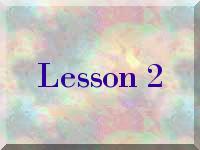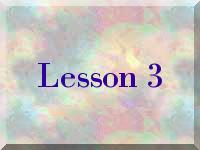Creating
Continents, Climates,
and Cultures



Michael W. Orton
Fesler Junior High School
e-mail: mikenannie@charter.net

Unit Overview
"Continents, Climates and Cultures" is designed to be a comprehensive enrichment unit which helps students make cognitive connections between physical land formations, climate patterns, and the cultures that develop therein. The entire unit should take about 10 to 15 class periods depending on age and ability.

Lesson One
In lesson one, Land Formation Scavenger Hunt, students will research the physical land formations which make up the Earth's continents and use them to construct a fictitious continent of their own.
Lesson Two
In lesson two, World Rescue Team: An Exercise in Latitude and Longitude, students will gain a basic understanding of longitude and latitude. They will apply their knowledge by placing their continent on a map of the world and identifying its location coordinates.
Lesson Three
Lesson three, Creating a Climate for Learning, involves students in understanding basic factors relating to climates throughout the world.
Lesson Four
The final lesson, Putting It All Together and Growing a Culture, leads the students through the essential developmental stages of civilization. As the final assignment, students must synthesize all the skills and information from the previous lessons into a final project where they will create a history and culture that corresponds to the location, geography and climate of their created continents.


Lesson Assessment
The unit builds upon each lesson toward the successful completion of the "Continent Project." It is important that all students complete the lesson successfully in order to advance to the next stage of the project. You may collect each lesson and check for accuracy and give written feedback, or check the student groups as you monitor their progress and give help where it is needed. The students will need to refer to previous tasks as they relate them to the development of the project.
Unit Assessment
I believe that an important part of student learning is allowing the students to assess their own work. They will ultimately be held accountable to the teacher's assessment of student mastery, but the critical skills obtained by analyzing their own work and self correcting should not be underestimated. I have developed a "Self-Assessment Rubric" for this unit which can be used by the students and teacher. Continent Project Assessment Rubric
Social Science Standards Addressed
Students will be able to:
•Identify
the major physical land formations on each continent.
• Have an understanding of latitude and longitude.
• Explain relationships between physical land
formations, climate patterns, and the cultures.
National Geography Standards
The World in Spatial
Terms
Geography is the study of the relationships between people, places, and
environments by mapping information about them into a spatial context.The
geographically-informed person knows and understands:
• How
to use maps and other geographic representations, tools (e.g., charts and
graphs), and technologies to acquire, process and report information from
a spatial perspective.
• How to analyze the spatial organization
of people, places, and environments on the Earth's surface.
Human Systems
People are central to geography in that human activities help shape Earth's
surface. Human settlements and structures are part of Earth's surface, and
humans compete for control of Earth's surface. The geographically-informed
person knows and understands:
• The characteristics, distribution,
and complexity of Earth's cultural mosaics.
Software & Materials Used
Basic internet connections are required for this unit. Although, if only the teacher has access to the internet, materials may be printed out and photocopied for the students. Classroom materials are basic: Classroom atlases (or internet access to atlas sites), white construction paper, scissors, glue, paper, and colored pencils.